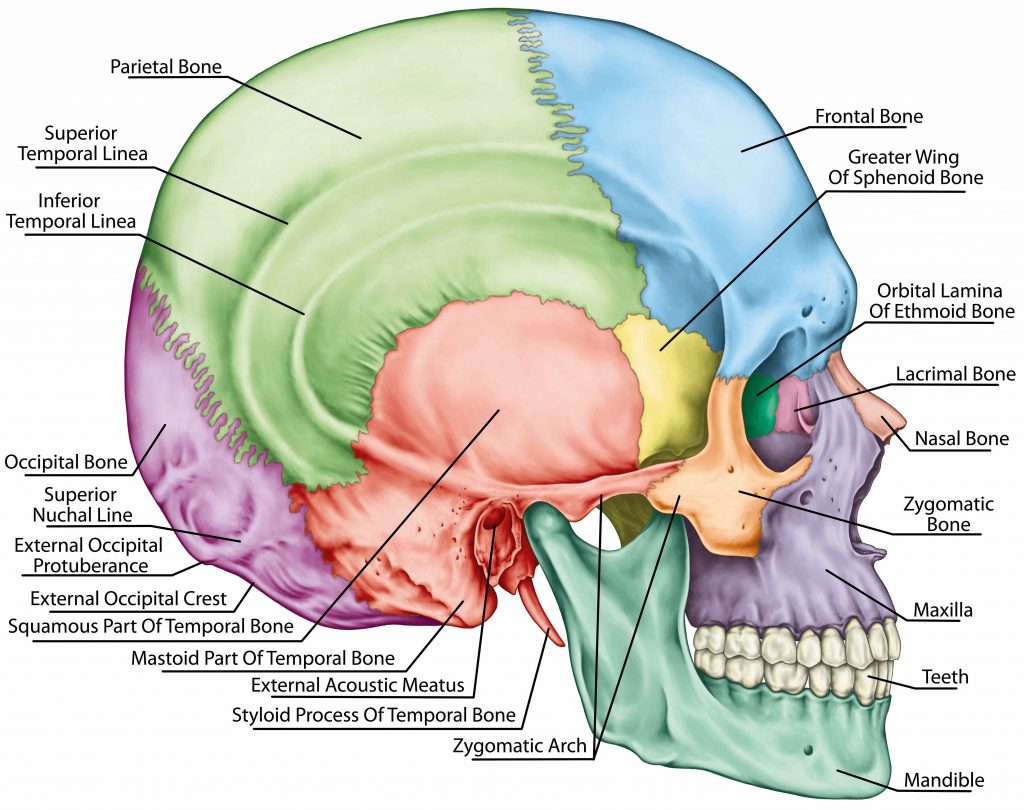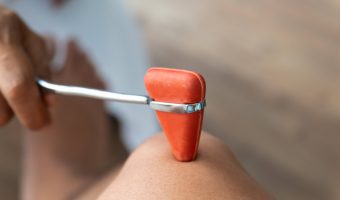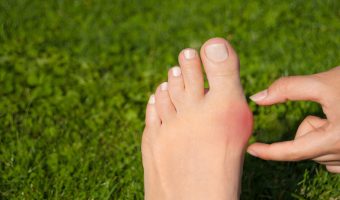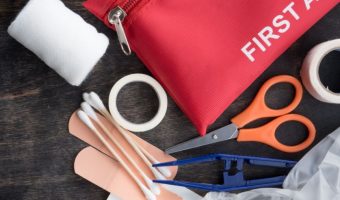Contents
Nursing school can be tough, and some of the toughest subjects are anatomy and physiology. Remembering everything you need to pass them can be extremely difficult, especially for those who weren’t good in biology class.
See also:
One of the best ways to get over this hurdle and pass your anatomy and physiology classes is to get a coloring book. Yes, that might sound strange, but it works! Here’s how to get a good one and how to use it to excel at your studies!

What is an Anatomy and Physiology Coloring Book?
When you hear the phrase “coloring book” the first thing you probably think about is a book full of popular cartoon characters or things like cars and fairies, made to entertain or teach preschoolers.
Well, these coloring books are not the same as those ones, but they do rely on a similar principle. Humans are visual beings, after all, something you probably already know as a nursing or pre-med student. We take in most information visually, and pictures are extremely helpful for reinforcing your memory.
That’s the principle that these coloring books are based upon, just like the ones used in preschools, though these ones have a different structure and format.
Like most coloring books they are filled with black-and-white outlines and diagrams that you need to color in. However, these are anatomical diagrams arranged and organized in a scientific order so as to help you learn them all.
Unlike other coloring books, they aren’t made up solely out of pictures that you need to color in. They also contain a lot of text that contextualizes the images and provides additional info to help you learn.
Most of these books will also contain some helpful tips on how to color the illustrations to make the most of them while learning. This includes tips on which parts to color in first and which colors to use.
You still have the freedom to color the book exactly as you want, but following some of these guidelines can help you avoid obscuring important detail in the illustration or help you highlight key parts, so they stand out whenever you open the book.
Most pages also have the names of certain body parts that you can color in – this allows you to match the color of the name and the body part, allowing you to instantly connect them in your mind.
So, overall, it’s no child’s play – these coloring books are made with serious studying in mind.
Why You Need an Anatomy and Physiology Coloring Book
You might think that’s all great, but the question in your mind could be – why would I use this instead of a textbook? Well, because it offers a lot of benefits that traditional textbooks just don’t provide.
The first thing they offer is a more visual way to learn. Sure, textbooks have some pictures as well, but they’re not made to help you memorize – that’s what written lists are for.
However, if you’ve ever tried to memorize a list of foot bones, you might realize the problem with that – the longer the list is, the tougher it is to memorize it. This is especially true if you can’t visualize how the bones connect and where each one is located.
With a coloring book, you won’t have that problem – you’ll know exactly where each part is. You won’t be just remembering a disconnected list but an image with parts that are connected to each other yet visually distinct due to being colored differently.
Colors naturally attract the attention of your eye, and it’s easier to remember objects that are more colorful. It’s a process that developed in our brain as a survival strategy but remains present even today.
The process of coloring itself also helps, since it creates visual relationships in your mind, reinforcing the mental pathways between your memories. It’s the same reason why highlighting certain words and sentences in a textbook helps you remember them.
However, a coloring book is better than simple highlighting because it presents the name of a body part and its image on the same page, thus helping your mind to instantly connect the two when you color them.
A visual representation of the material is the key here. Our brains think primarily in images, which makes the visual way of learning one of the best ones out there. This is also why anatomical atlases are also useful and often recommended to nursing students.
The issue with them is that they use inconsistent coloring that might confuse your mind instead of helping it learn, or they simply don’t use enough colors. With a coloring book, you can create a system that fits you the best and use as many different shades as you need to.
The hand gestures of coloring are also vital in improving your memory since they arouse your brain and provide another connection to the material.
The brain learns better when it gets information from multiple sources at the same time. If you’re reading, seeing and coloring at the same time, you’re learning in three different modes at once which is much better than just reading or seeing the material.
But, one of the most important things is that coloring is simply fun and relaxing, even if you’re an adult. You’re learning, but you’re not as tense as you usually are when you enter your studying mode. This also helps you retain information easier and avoid the fatigue that stops you from learning effectively.
By studying with a coloring book you’ll retain the information for a long time and you will hardly need to study anatomy even for your NCLEX exam.
How to Study From a Coloring Book
So, you’ve decided to learn anatomy from a coloring book – however, you might not know where or how to start. After all, you probably only studied by using a textbook. Well, here are a few tips on how to effectively learn from a coloring book.
Before you even start learning from the coloring book, you need to buy something you’re going to color with and think up a system. Try to get as many different colors as possible so you can have variety.
Also, if you want to be able to color in more than once, get a type of pencil that you can erase after you finish coloring – it makes this type of studying even more effective than usual.
Once you’ve got everything ready, it’s time to sit down and start studying!
The first thing you need to do is to choose the section you want to study today. For example, foot bones – that’s a particularly ‘popular’ subject.
Before you start coloring in, read the instructions carefully – they will tell you the order which you should use while coloring. Following that specific order is essential since it’s designed to help you learn easier.
Most anatomy and physiology coloring books have a pyramid-like approach to learning. They will instruct you to start coloring the core or the larger parts first and move towards the periphery.
For example, the foot bones – you would start with the cuboid bone, navicular bone, and cuneiform bone and move through the metatarsal bones all the way to the phalanges. You’ll learn all you need to know about the important bones and things like high and low arches.
When you start coloring in, start with one of the major subjects first and move to the smaller and more detailed pages on specific body parts.
During coloring, always color in the name of the body part and the immediately color in that body part. Don’t get lazy and color in all the names first and then the pictures – that won’t help you learn properly.
Once you’ve colored everything in, you have two choices. The first one is to use the coloring book like an anatomical atlas from this point on. The second one is to erase all the coloring and start over – the second method is more time-consuming, but it will help you memorize everything much better.
How to Find a Good Anatomy and Physiology Coloring Book
There are many different anatomy and physiology coloring books out there, and not all of them are equally good. Some are certainly more helpful than others, and you need to choose the right one in order to study properly. Here are a few things to consider.
The Subject
Some of the coloring books that you can find don’t cover anatomy and physiology – some cover only one of the two subjects, but go into more detail. There are even coloring books focused solely on the brain or the nervous system.
If you want to laser-focus on a particular part of the human anatomy, get a coloring book focused on that as a supplement to a more general coloring book. Make sure to know what the subject and contents are before you buy, though.
The Level of Detail
While some coloring books contain excruciatingly detailed illustrations, others have larger illustrations that are more general.
Now, more detail and info is nice, but it also makes the illustrations much more difficult and time-consuming to color in.
If you want some general reminders but don’t want to spend a lot of time coloring, go for larger illustrations. However, if you want precise info above all else, buy a coloring book that has more detailed illustrations.
Additional Content
Most of these coloring books don’t contain just illustrations that you have to color in – they can also contain plenty of other stuff as well.
A lot of them contain info that you would find in a regular textbook alongside the illustrations. Some contain self-quizzes that you can use to test your knowledge or even a set of flash cards that are also colorable.
All of this can be exceptionally useful, and you should consider it all before buying the coloring book.
Student Experiences
While coloring books like this can be useful, not all of them are. The best way to gauge the usefulness of one of these books before buying it is to look up what the students who used it say about.
Search for the name of the book or look at user reviews on sites that sell it, like Amazon for example, and you’ll get a good idea of how useful the coloring book will be.
5 Anatomy Coloring Books You Should Consider:
Anatomy Coloring Workbook, 4th Edition: An Easier and Better Way to Learn Anatomy
What this coloring book offers above all others is the best of both worlds – large pictures with a lot of details on them. You’ll be able to get a clear view of everything you need while also getting detailed info.
The information and descriptions included besides the images are also great and work well in instructing you on the different body parts that you’re coloring.
However, it’s still not as complex as some other coloring books out there, so if you need intricate details, you won’t find them here. The binding is also poor, so it probably won’t last too long.
Overall, it’s a great study tool for A&P classes and contains a lot of info on physiology as well, not just anatomy.
Pros:
- Contains a lot of good info
- The pictures are both large and detailed
- It covers physiology as well
Cons:
- It doesn’t go into the fine details
- The binding is poor
Anatomy and Physiology Coloring Workbook: A Complete Study Guide
Here we have a great, comprehensive coloring book that covers both anatomy and physiology and is made by proven authors – Elaine N. Marieb and Simone Brito – who have written other successful books on the subject.
So far, this is their best effort – the workbook is full of large illustrations coupled with great explanations.
However, the illustrations are not as detailed or as accurate as you might want them to be. It’s easy to learn the basics from them, but for anything more detailed you’ll have to go to a textbook.
For most, this will be a great supplement to a textbook, though, especially since it contains a lot of good self-quizzing and review material. If you’re looking to reinforce your knowledge, it’s a great choice.
Pros:
- Detailed info accompanies the illustrations
- Great for beginners
- Contains plenty self-quizzes and other additions
- Has both anatomy and physiology info
Cons:
- The illustrations are not detailed enough
- The coloring instructions are a bit confusing
The Anatomy Coloring Book
Even if you haven’t looked into anatomy coloring books before, you might have heard of this one. This is one of the oldest and most popular anatomy coloring books out there and for a good reason – it’s incredibly good.
Currently, on its fourth edition, it contains tons of detailed illustrations relating to both anatomy and physiology, despite what the title may imply. Still, its primary focus is anatomy.
The book is beautifully made and contains great double spreads which are easy to color, the illustrations are hand-drawn, and the binding and paper are of high quality. All of that is accompanied by concise and clear descriptions that will help you learn.
Some people have found it a bit difficult or tiresome to color, due to all the small details. If you’re short on time, this is not the coloring book for you.
Sadly the book doesn’t contain much in the way of self-quizzing or review material, but the core of it is good enough that this is not so important.
Pros:
- While focused on anatomy, it has some physiology illustrations as well
- Hand-drawn, detailed illustrations and double-page spreads
- Well-made with quality materials
- Helpful and concise info
Cons:
- Might be difficult to color due to all the small details
- Not enough review and self-quizzing material
Netter’s Anatomy Coloring Book
This is an incredibly detailed coloring book with a total of 400 pages and tons of illustrations. It focuses on the human anatomy and features over 160 coloring exercises as well as review exercises.
The illustrations inside the book are incredibly detailed and made to be as medically accurate as possible. Lots of detailed info tables for quick reviews of what you learned are also included.
However, this is not a coloring book made for beginners – if you don’t have any pre-existing knowledge, you’ll just feel lost. With that said, if you’re already versed in the subject of anatomy, this will be a great learning tool for you.
If you’re looking for anything on physiology, though, you won’t find it here – this is strictly an anatomy coloring book.
Pros:
- Contains large, detailed illustrations
- Plenty of review exercises available
- Contains a useful supplementary e-book
- Made out of quality paper
Cons:
- Bad for beginners
- Only focuses on anatomy
Kaplan Medical Anatomy Coloring Book
Developed by a pair of well-established authors, Eric Wise and Stephanie McCann, this is a coloring book designed with everyone in mind. It has large images with plenty of details on them, a good coloring guide and content organization that promotes effective learning.
The explanations that come with the illustrations are good and concise, but they do lack a bit of info that you would expect – you’ll probably need some additional study material along with this.
It is just an anatomy coloring book, though, and some information is omitted – skeletal muscles and reproductive organs, for example.
There’s plenty of self-review content included, though, like flashcards that you can color in and tear out of the book. This is all designed to help you study as best as you can.
Pros:
- Large and detailed illustrations
- Comes with flashcards you can color and use
- Great coloring guide
- Well-organized for studying
Cons:
- Some information is omitted
- The explanations are not detailed enough
Conclusion
As you can see, coloring books aren’t just child’s play – they’re an incredibly effective way to study. They are especially useful for subjects that contain a lot of visual information, like human anatomy and physiology.
Once you get a hand on one of these coloring books, you’ll be able to see that for yourself. They’re not a replacement for a textbook, but they’re a great supplement that will help you remember the toughest parts more easily. So strap on your backpack and go to your A&P classes with no fear!
If you have any thoughts on the matter or would like to ask a question, just comment below. If you liked the article share it around and hopefully you’ll come back soon for more great info!










Leave a Reply